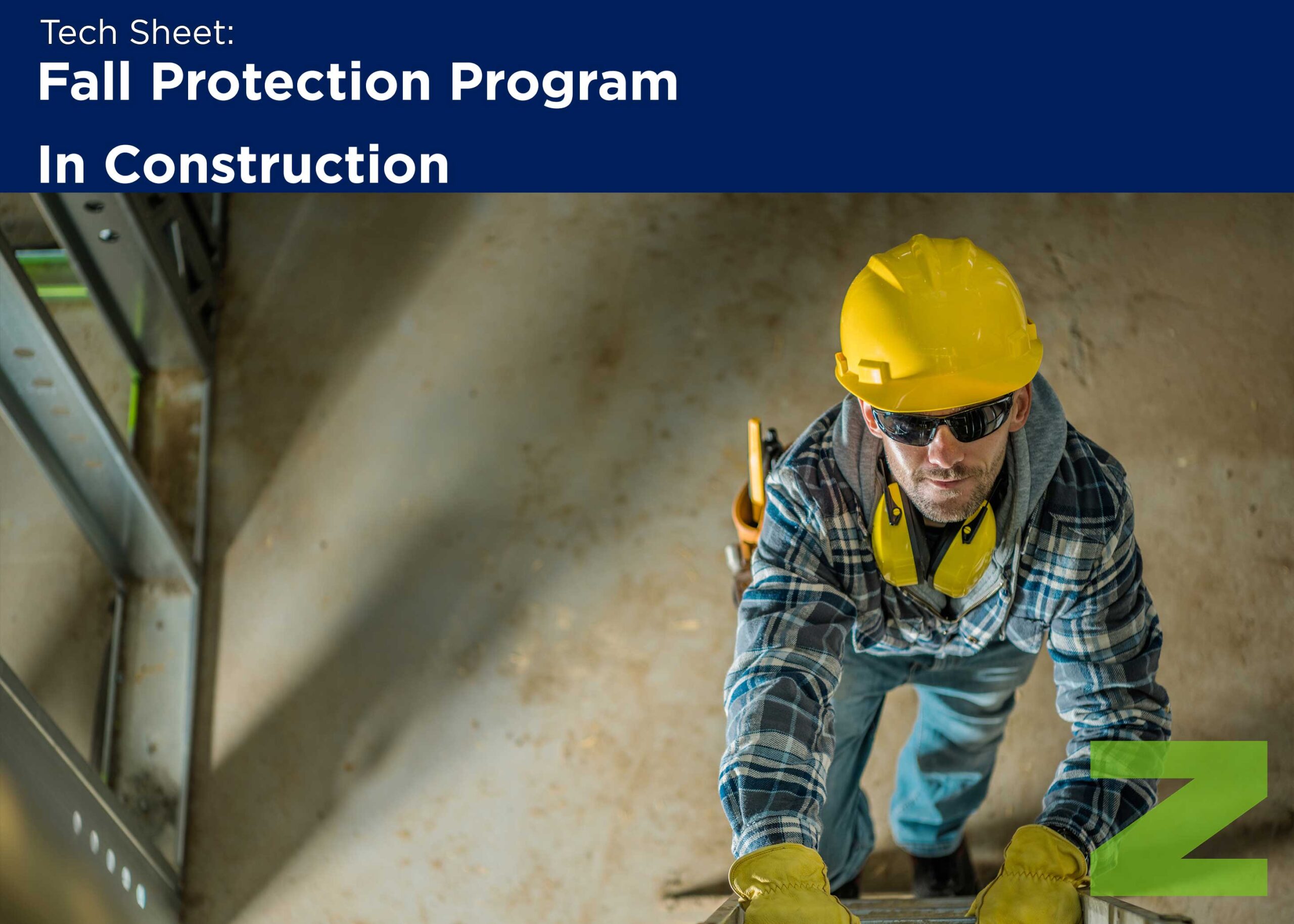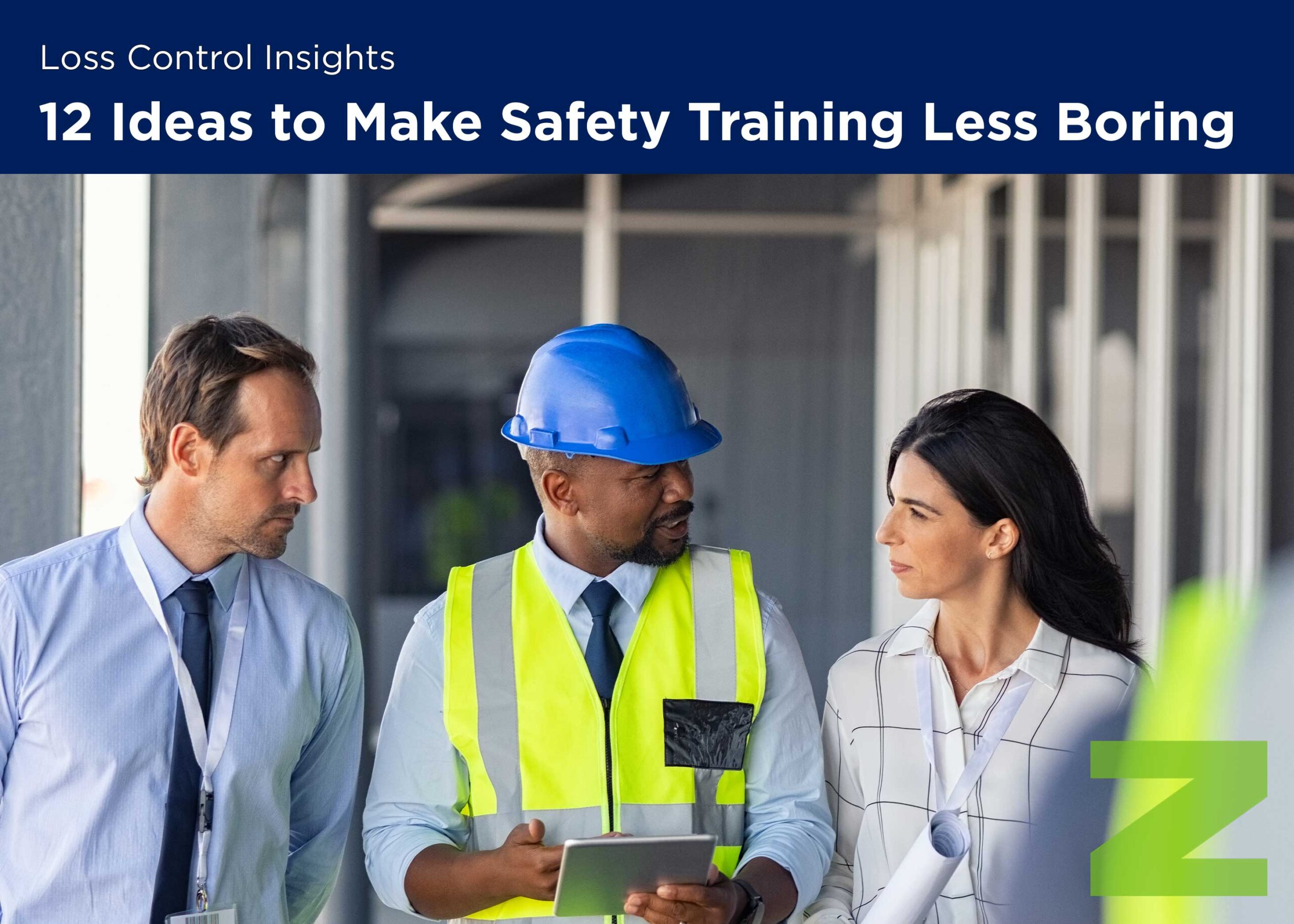Tech Sheet
Fall Protection Program In Construction
Falls are the most frequent cause of fatalities on construction sites and account for one out of every three construction-related deaths. Although prevention measures are available, the number of fall-related construction deaths has increased in recent years. OSHA’s Fall Prevention Campaign includes three simple steps for fall prevention: Plan, Provide, Train.
Plan Ahead Employers should take measures in their workplaces to prevent employees from falling off overhead platforms, elevated work areas or into holes in floors and walls. Fall protection systems should be preplanned and equipment requirements predetermined by assessing the work tasks and expected working conditions. Assessments should consider the number of employees, anchorage points and specific personal protection equipment. The goal of these assessments is to eliminate or reduce any possible exposures.
Protection methods involve specific equipment used to access the work area or methods of protection, such as fall restraint or fall arrest systems. Whatever tools and equipment are used to perform work at heights, all employees should be trained on the system(s), how the equipment works and equipment limitations.
Provide the Right Equipment OSHA requires fall protection for each employee on a walking/working surface with an unprotected side or edge that is 6 feet or more above a lower level. Protection measures may include guardrail systems, safety net system, or personal fall arrest systems. Employers also have the responsibility to determine the strength and structural integrity of all walking/ working surfaces encountered by employees. Common examples where fall protection measures are necessary include:
• Working on unprotected sides or edges
• Constructing a leading edge
• Working where leading edges are under construction, but not performing the leading edge workOn the face of formwork or reinforcing steel
• On ramps, runways or other walkways
• At the edge of an excavation
• Working above dangerous equipment or materials
• Performing overhand bricklaying and related work
• Reaching more than 10 inches below the level of the walking/working surface
• Engaging in roofing activities on a low-slope roof (slope less than or equal to 4 in 12, vertical to horizontal)
• Engaging in roofing activities on a steep roof (slope greater than 4 in 12, vertical to horizontal)
- Erecting precast concrete members
- Engaging in residential construction activities
- Working on, at, above or near wall openings
Training Requirements According to OSHA, employers are required to provide a training program for each employee exposed to fall hazards. The program should instruct each employee to recognize fall hazards and appropriate procedures to minimize these hazards. This training should be performed by a competent person familiar with fall hazards in the work area and include the following topics:
• The nature of fall hazards in the work area
• The correct procedures for erecting, maintaining, disassembling and inspecting fall protection systems
• The use and operation of guardrail systems, personal fall arrest systems, safety net systems, warning line systems, safety monitoring systems, controlled access zones and other protection
• The role of each employee in the safety monitoring system
• The limitations on the use of mechanical equipment during roofing work on low-sloped roofs
• The correct procedures for the handling and storage of equipment and materials and the erection of overhead protection
• The role of fall protection plans, if used
- OSHA 1926 Subpart M standards
Training activities should be documented and retained to confirm compliance with OSHA’s training requirements. The training certification record should include:
- The name or other identity of the employee trained
- The date(s) of the training
- The signature of the person who conducted the training or the signature of the employer
Retraining If a trained employee does not appear to have the understanding and skills required to work safely, they should be retrained as soon as possible. OSHA requires retraining whenever: • Changes in the workplace, work procedures, or fall protection systems render the previous training obsolete • Evidence that an employee’s knowledge on use of fall protection systems or equipment is inadequate, such as an accident or near miss





